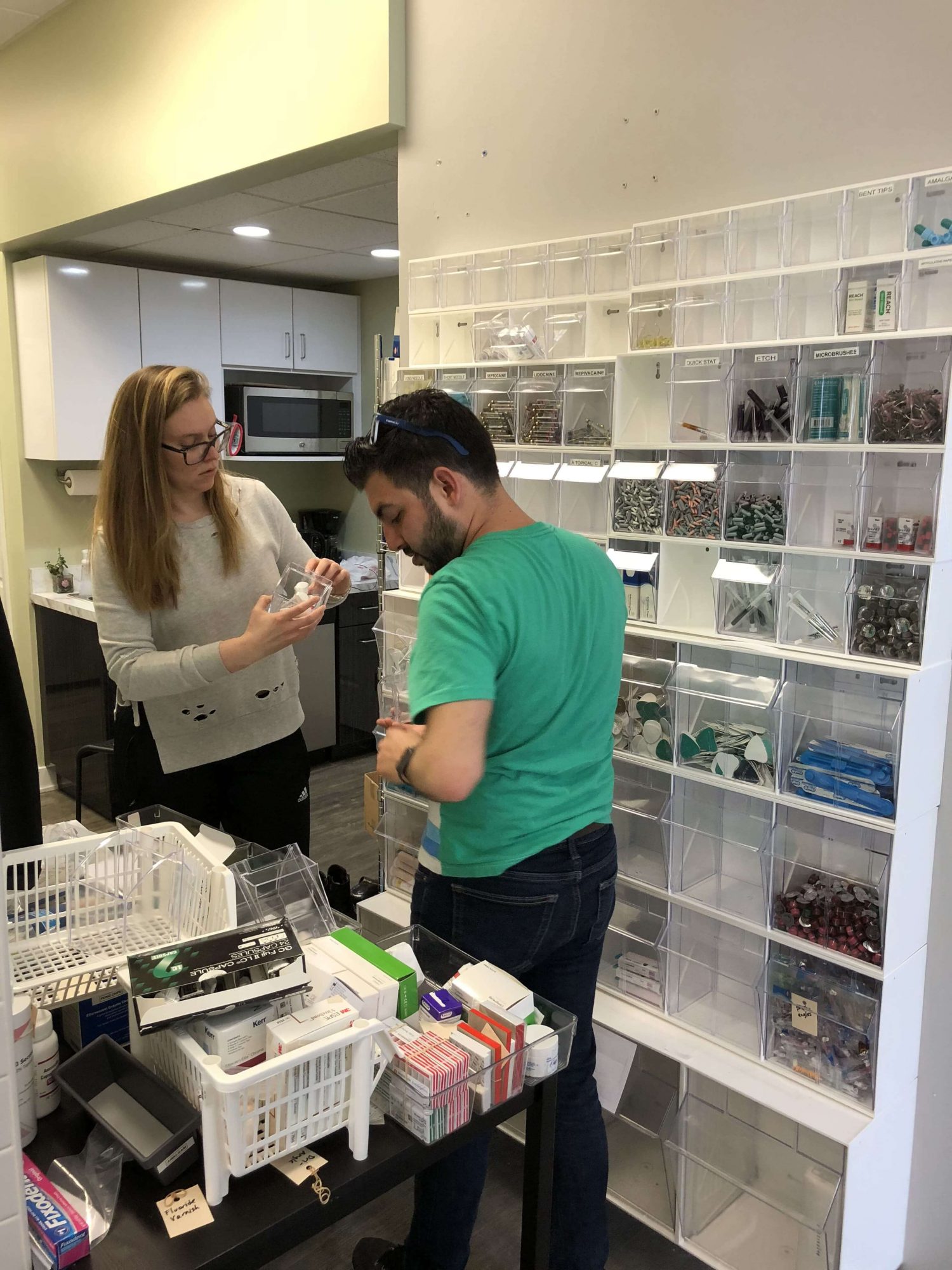Join 1000+ dental professionals, shop from your favorite suppliers, compare prices instantly, and save over $17,000/year
Try our platform free for 30 days.
Start for FreeLEAN methodology in a dental setting involves implementing effective ways to manage the clinic’s operations and increase overall dental office efficiency. This can encompass things such as streamlining scheduling, minimizing waste, and enhancing communication among patients and staff members. One of the main advantages of LEAN methodology is increased dental office productivity. A Lean Dental Office will have shorter appointments and less downtime for patients, as well as more patients seen per day for dental professionals.
A few examples of implementing LEAN in a dental clinic can include:
– Adopting a digital appointment system that allows patients to schedule appointments online, reducing the need for phone calls and paperwork.
– Implementing a dental inventory management system for monitoring inventory and ordering supplies in a timely manner to decrease waste and save money.
– Using an electronic system to track patient information and medical history, which can improve communication among staff members and enhance patient safety.
– Scheduling regular staff meetings to discuss and resolve any issues or inefficiencies in the clinic’s operations.
– Analyzing data and metrics regularly to identify areas for improvement and make changes to the clinic’s processes.
The 90% rule in a lean dental office refers to the concept of identifying and eliminating non-value adding activities to focus on the critical 10% of activities that truly add value to the patient experience. This principle is also based on the idea of “lean thinking.” Therefore, the goal of the 90% rule is to streamline operations, reduce costs, and improve the overall quality of care for patients.
The first question to start with: what procedures do you perform most frequently? By identifying these procedures, you can begin to implement the 90% rule. By dedicating 90% of your time and resources to these high-value procedures, you can improve efficiency and enhance the patient experience.
Where else can the LEAN 90% rule be applied within the dental office?
It is worth noting that the LEAN 90% rule is not limited to only one aspect of the clinic, it should be applied to all aspects of the clinic, from patient flow, to communication, inventory, and so on. To apply the LEAN 90% rule for other areas within a dental clinic, the following steps can be taken:
1. Identify and map out the current processes in the clinic: Create a detailed map of each process, including all the steps involved, the time spent on each step, and the people involved. For example, these processes could include but are not limited to scheduling appointments, ordering supplies, or tracking patient information.
2. Identify value-added and non-value added activities: Analyze each step of the process and determine which activities add value to the process and which do not.
3. Measure the performance of these processes: Collect data on how long each process takes, how often it is performed, and how many errors occur.
4. Determine the 90th percentile: Use the data to determine the 90th percentile of the population for each process. For example, if scheduling appointments takes an average of 10 minutes, but the 90th percentile takes 15 minutes, then the process should be designed to handle appointments that take 15 minutes or less.
5. Redesign the process: Once the 90th percentile has been determined, redesign the process to accommodate the majority of cases. This could involve simplifying the process, eliminating unnecessary steps, or automating certain tasks.
6. Monitor the process: After the process has been redesigned, monitor its performance to ensure that it is meeting the needs of the 90th percentile. Regularly collect data and analyze it to identify any areas for improvement.
7. Continuously improve: Continuously look for ways to improve the process and make it more efficient.
Empowering Staff Members to Lead LEAN Initiatives
Implementing Lean dental practice management system in an organization can be a complex process, and it is crucial to involve staff members in the process. It may take time for Lean to become fully integrated into the company culture, and there may be initial resistance from some employees. To combat this, it is important to keep communication open and gather input and feedback from staff members when identifying and implementing Lean projects. By giving employees a say in the changes that affect them and allowing for a trial period, it can foster greater participation and ownership of the projects. Once the benefits of increased productivity are evident, staff members are likely to become more invested and enthusiastic about Lean principles. Additionally, sharing the benefits with staff members can further incentivize their participation and ideas.
The Importance of Establishing a Process
It’s important to remember that while achieving great results is important, the methods we use to get there are even more crucial. Leaders who only focus on the numbers without considering the process may end up with manipulated numbers or negative behaviors that harm the customer experience. Some other key things to keep in mind when it comes to process include:
– Following the consistently of solving problems on a daily basis;
– Making problems visible to everyone;
– Encouraging open communication about problems;
– Cross-training employees for added flexibility and agility;
– Holding daily morning meetings for training, learning, and updates.
Continuous Enhancements and Involvement
Adopting Lean principles in a dental office can be a never-ending journey of continuous improvement. By constantly examining and evaluating processes, dental clinics can make measurable improvements time and time again. By bringing different teams together and trying new ideas, dental clinics can bring their workflow optimization to a new level. Not only do these changes improve productivity and reduce waste, but they also engage employees and foster creativity, making the process highly rewarding.
written by Angie Bachman,
Director of Clinical Training at Design Ergonomics










